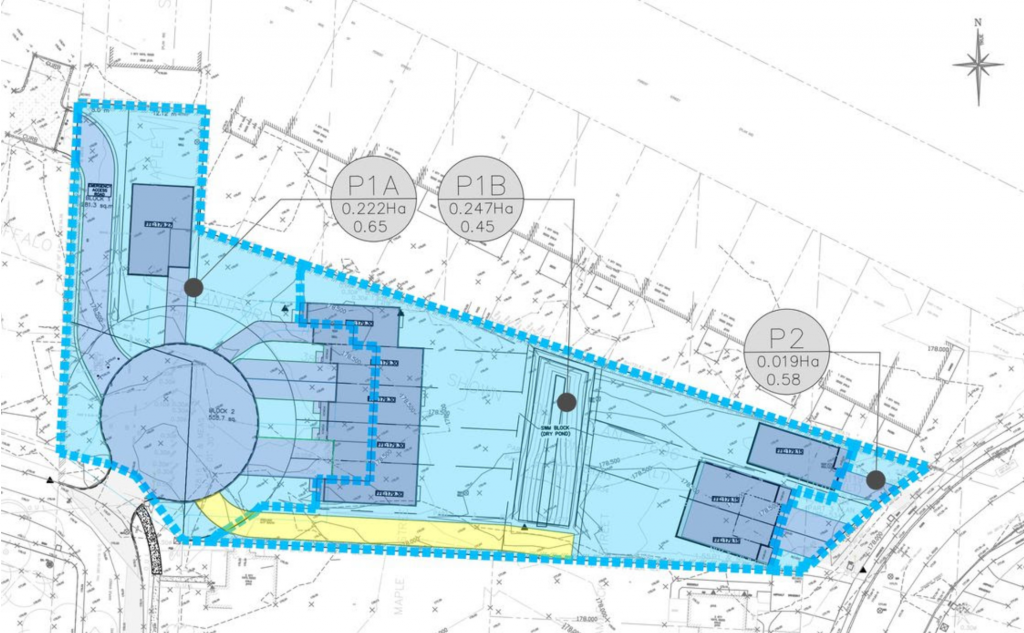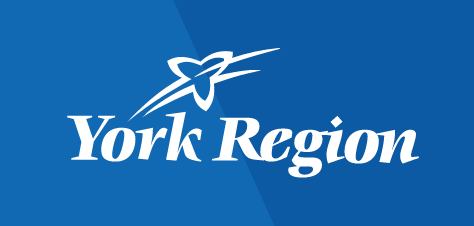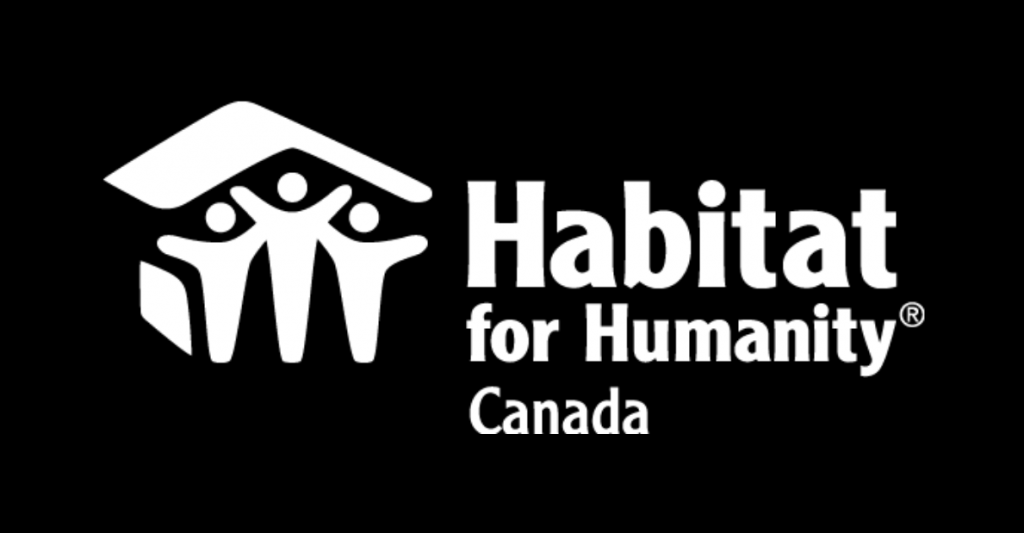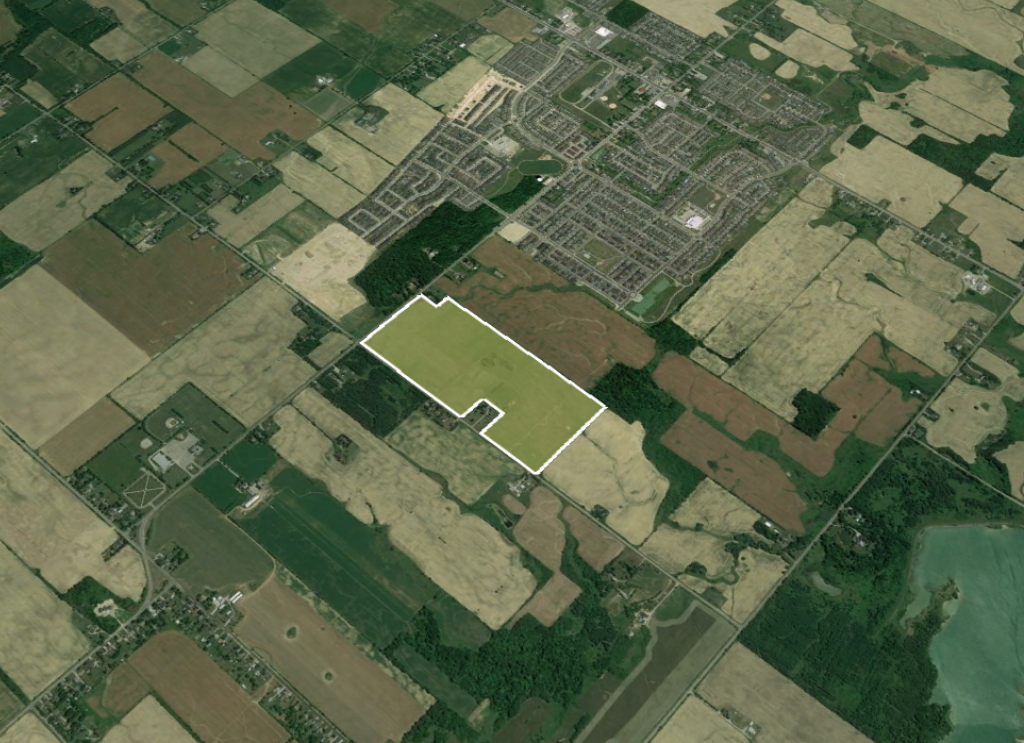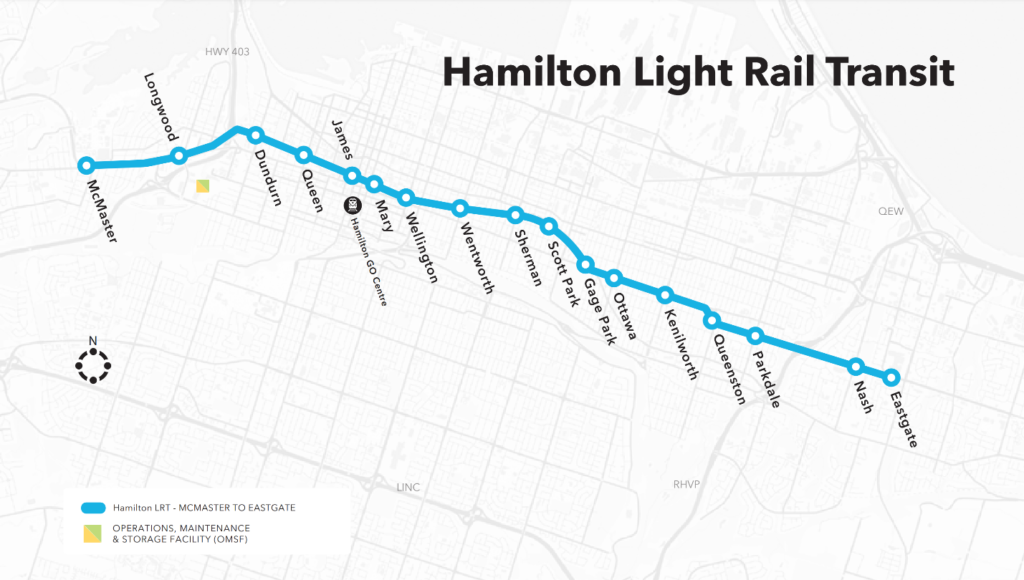In June 2021, Councillors for the City of Hamilton approved plans to move forward with a 14 km rapid transit corridor. Council members who voted in favour were Mayor Eisenberg, Councillors Maureen Wilson (ward 1), Jason Farr (ward 2), Nrinder Nann (ward 3), Sam Merulla (ward 4), Esther Pauls (ward 7), John-Paul Danko (ward 8), Lloyd Ferguson (ward 12) and Arlene VanderBeek (ward 13). The line will run along Highway 8 and Main Street, stretching from McMaster University to Eastgate Square Mall. The province and federal government have committed to paying $3.4 billion to fund the cost of constructing the LRT line. In September 2021, the City signed a Memorandum of Understanding committing the City, province and Metrolinx to the project.
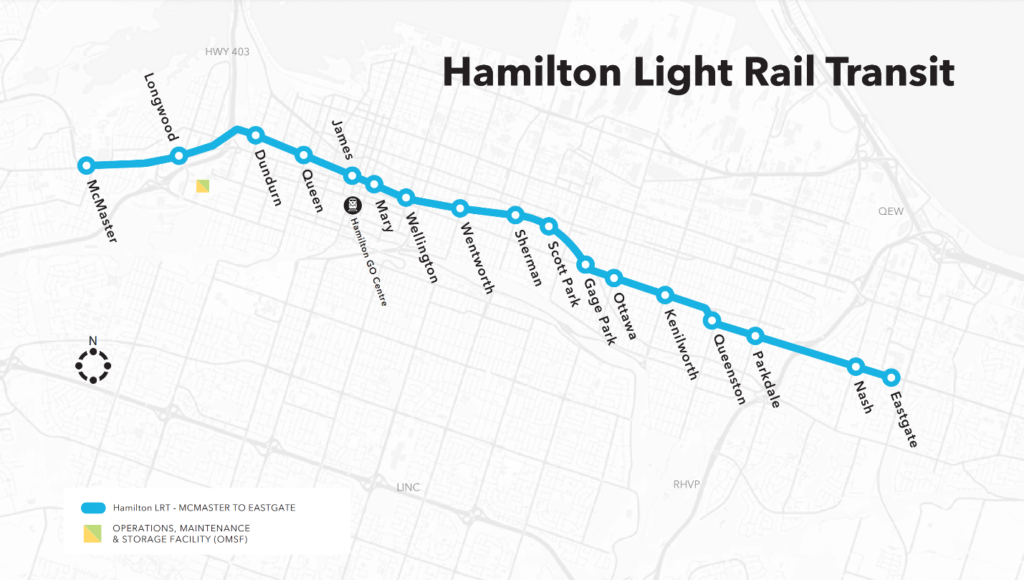
With a population of approximately 585,000, Hamilton is Ontario’s 5th largest city. Through the Growth Plan, the Province has targeted a population of 820,000 for Hamilton by 2051. The addition of the LRT line will facilitate intensification along the LRT corridor, a strategic move that will help the City to meet provincial growth targets.
As the City updates its official plan through a Municipal Comprehensive Review process (GRIDS2), it is assessing options to accommodate the significant population increase. With little available greenfield land supply remaining, the City has in the past identified Elfrida as a preferred growth area. A mailout survey was distributed to households in late June to ask for opinions about how the City should grow to the year 2051. The following options were presented within the survey:
Option 1 – ‘Ambitious Density’ scenario, which places ambitious density targets within the built-up area and greenfield area and includes an urban boundary expansion.
Option 2 – ‘No Urban Boundary Expansion’ scenario, which places the burden to accommodate all growth to 2051 within the existing urban boundary.
Option 3 – ‘Other Suggestions’
According to the City, 90.4% of respondents voted for Option 2. The West End Home Builders’ association subsequently completed a review of the study which finds the survey to be flawed and suggests that Hamilton residents are more likely to prefer expanding the urban boundary over fitting additional people into existing neighbourhoods.
The determination of how to grow impacts the types of housing that will be available. Intensification is conducive to high density forms of housing, whereas development within greenfield areas is conducive to lower density forms of housing. The LRT project in Hamilton is sure to attract significant investment to the City, but Hamilton will have an important decision to make – to grow only up, or to also grow out.

